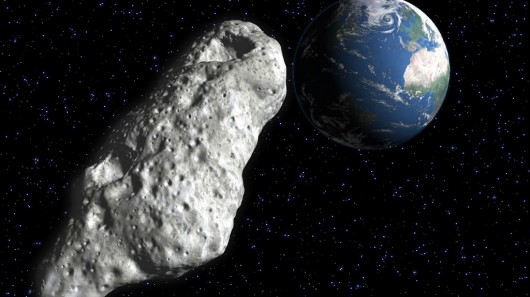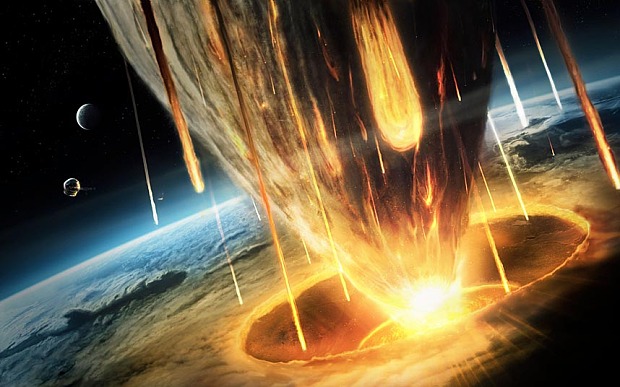 March 5, 2016 is when we will experience the fly-by of Asteroid 2013 TX68.
March 5, 2016 is when we will experience the fly-by of Asteroid 2013 TX68.
Coming in at somewhere between 11,000 and 9,000,000 miles, the asteroid is 100 feet in diameter and twice the size of the Chelyabinsk meteor that exploded over Russia in February 2013. We have only been watching it for a few years, which is why there is a such a proximity of possibility; we just don’t know enough about its orbital path yet.
The scientists ensure us it is exceedingly unlikely we would ever come into contact with this asteroid. On a future flyby, on September 28, 2017, for instance, it will have a one in 250 million chance of colliding with Earth. And the odds scale down after that.

“The possibilities of collision on any of the three future flyby dates are far too small to be of any real concern,” said Paul Chodas, manager of NASA’s Center for NEO Studies (CNEOS) in California.
At its closest, 2013 TX68 could pass closer to the Earth than some orbital satellites.
Asteroids and meteors are no joking matter and NASA has recently opened an asteroid defense unit called the Planetary Defense Coordination Office. “Asteroid detection, tracking and defense of our planet is something that NASA, its interagency partners, and the global community take very seriously,” John Grunsfeld, associate administrator for NASA’s Science Mission Directorate in Washington, said in a statement.
NASA’s Asteroid Redirect Mission and the joint NASA-ESA Asteroid Impact and Deflection Assessment are preparing to deflect incoming asteroids.
Source: Minds









